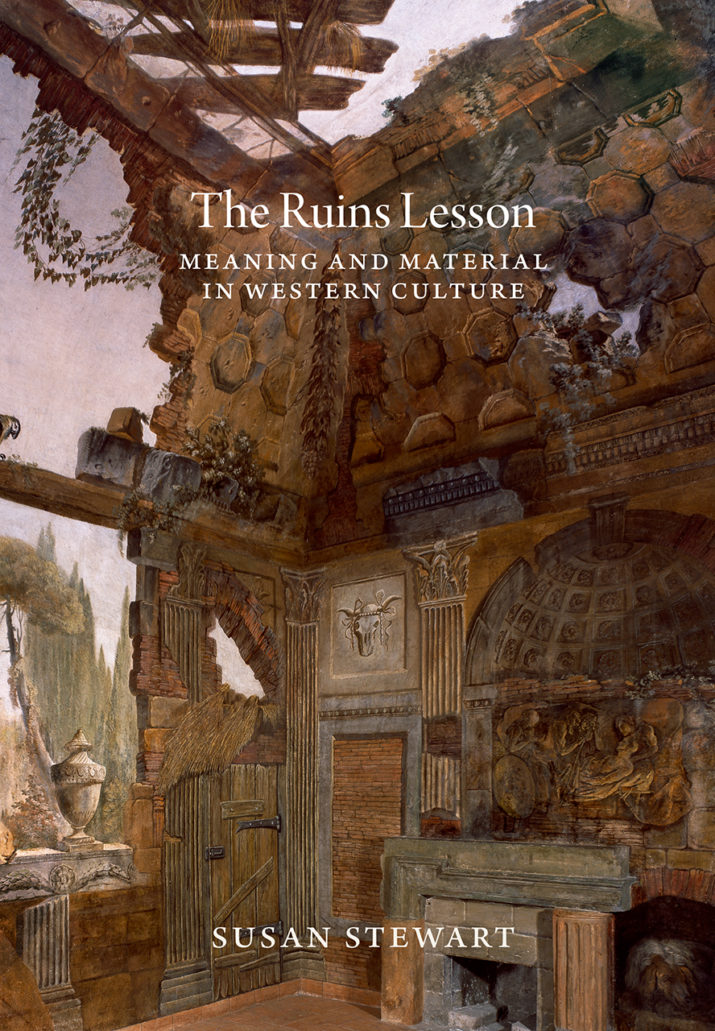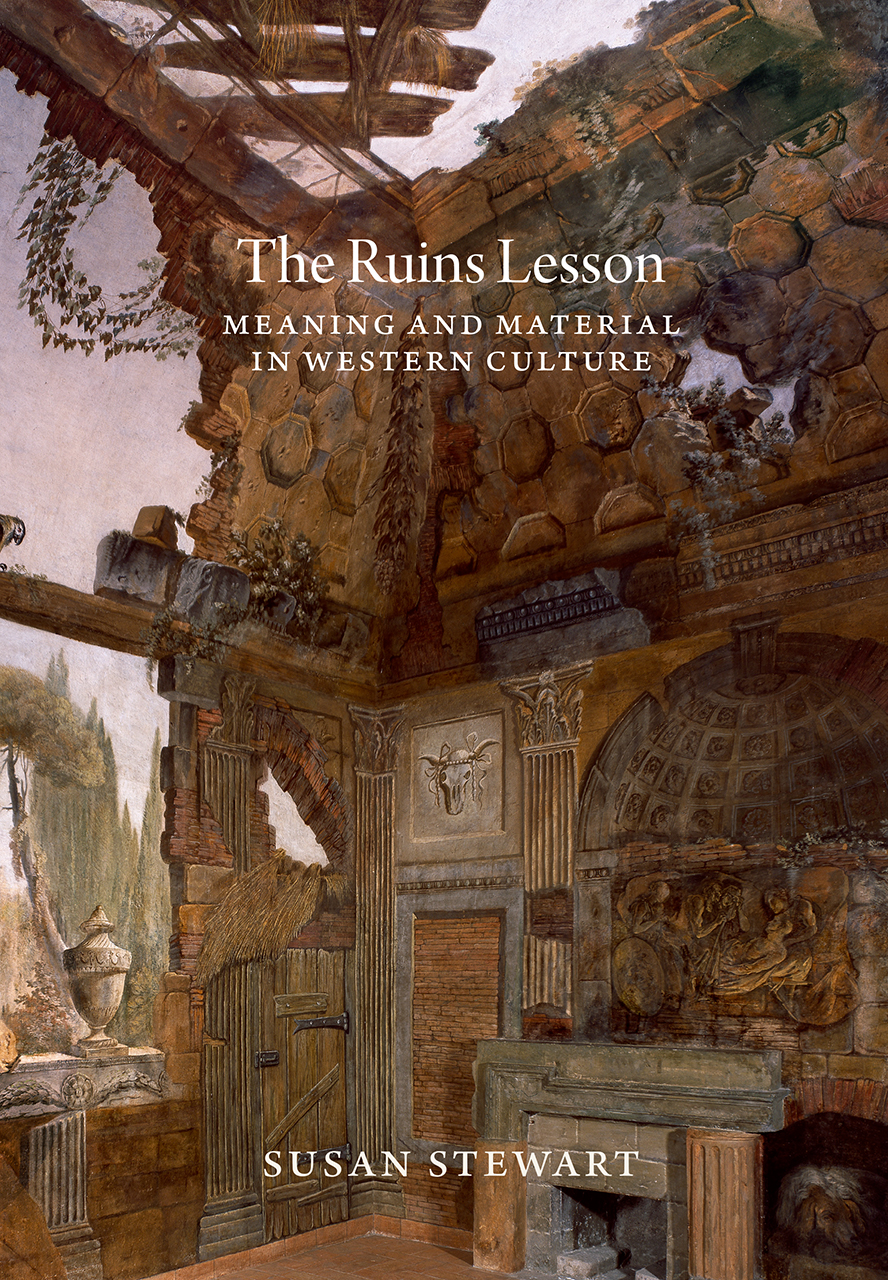

In today’s Europe, ruins present themselves both as timely and untimely. In cultural discourse, as materials, they are often associated with quaint tourist attractions. As metaphor and process, however, they are timelier than ever before. While Europe resists ruination of an invisible order such as that of climate change and the pandemic, ruins, as objects, are iconic, proud, and cherished vestiges of historical conquests, wars, and sacrifice, betraying a longing for the past in the Western European cultural memory. We live in an age that values the immaterial, with an invisible virus leaving an impact that does not lead to ruination of buildings, as such, but is enacting ruination with unprecedented vigor nonetheless. If, according to Susan Stewart, marking place has been crucial for a sense of orientation and existence for humans since time immemorial, millions in the so-called developed world now face nomadic and precarious lives, no longer with assumed access to possessing their own land, which makes nostalgia for ruined structures and objects all the more counterintuitive. The question Stewart seeks to answer in her lucid, erudite, and extensively researched cultural history is the following: why are ruins, which damage the comfort of permanence, such a preoccupation for Western art and literature? Stewart answers this question by telling us of their peculiar position throughout European history as sites of self-reflection during monumental cultural moments. They force the beholder to reflect on the limits of representability. They lend cultural prestige to those who enacted the ruination, functioning as representations of the destruction of one’s competitors, as the Christians did to the Romans. A recurring theme in this book is that of the evanescence of architecture in comparison to language. We also learn of the frequent use of ruined buildings as metaphors of violence done to women, betraying the status of women’s bodies as akin to material goods throughout Western cultural history.
The central protagonist of Stewart’s magisterial ruins lesson is Rome, although an ancillary role is played by ancient Egypt. She guides us in the reception of Roman ruins in Western Europe through a vast range of prints, engravings, paintings, poetry, travelogues, and architecture from antiquity, to Northern Renaissance and Italian Humanism, onto the eighteenth century and Romanticism. We leave Rome at times, to the empire’s ruins in England, and we learn about the grand tours of antiquarians and aristocrats such as Robert Wood and Hubert Robert, and, later, Goethe’s Italian journey. We read not only of destruction, but the theft of Roman ruins by the English and French during the Napoleonic Wars. The eight chapters are, innovatively, not divided up into separate authors, geographical periods, or even separate historical epochs. Rather, they are separated according to the varying functions of ruins: matter, spolia, mater, matrix, model, and mirrors. As an object, the book is brilliantly punctuated with the engravings and plates each of which Stewart carefully analyzes. The illustrations of ruins are key, as their significance, besides nostalgia, ranges from aesthetic appreciation to a means by which to display cultural and religious superiority. As thematized most explicitly by the Romantics and in the art of the Northern Renaissance, their sublime effect emerges from their reminder that the great, too, may fall. Of particular interest to Stewart is that their liminality, once as stable historical referent, yet one in the process of disappearance and thus entirely distinct from what it once referred to, compels us to reflect on representability and signification as such. They may provide a generative means to do so. For example, during the Renaissance, ruins were often depicted in the visual arts to display a masterful use of the early adoption of a single-point perspective grid. Counterintuitively, their amorphous forms made them suitable for the visual arts. And ruins train the sensorium to experience perspectives of interiors as well as details such as lighting, which would, otherwise, be inaccessible when dwelling in completed buildings. Roman monuments, we learn, have frequently suffered damnatio memoriae, the idea that their destruction would erase the memory of their erstwhile existence. This logic endures today, as we are in the midst of the international removal of the statues of slaveowners and virulent, once celebrated racists. The early Christians, on the other hand, in the process of destroying the empire’s treasured buildings, aimed to show the power and prestige of Christianity. The resulting ruins appeared in a wealth of images of key moments in Christianity, such as the annunciation.
Stewart’s examination of the early eighteenth-century Venetian and Roman architect, scenographer, and engraver Giovanni Battista Piranesi, among the countless other figures treated in her wide-ranging book, is particularly compelling. Several points she makes about Piranesi’s work provides insight into her own self-reflective descriptive acts. Stewart reads his dreamscape engravings, some cluttered, others expansive and unfinished, as highly aware of their medium. Piranesi treats the page itself as a stage in which he seeks to produce effects of monumentality as well as interiority. Piranesi is aware that any view he provides of a ruin will be necessarily partial, and thus the “audience must complete the depicted forms by using their imaginations” (165). Using techniques of trompe l’oeil to break the separation between viewer and the ruins represented, he brings to fore the ground, the paper, and plate, which are its media, the plate of the print which is in itself a ruin, a “trace of a ruined form” (38). Stewart makes clear that ruins are not only buildings and inanimate objects. Ruin, in Western cultural discourse, is also often applied to the female body, betraying the long-standing tradition of women as material, exchangeable goods, which Stewart traces to innumerable Biblical representations of women as either virgins or whores with a lineage proceeding on to Romanticism. Representation of the ruin of women’s sexual purity, the source of their value, differs from the ruination of buildings and objects. Stewart considers, in particular, the rape of Lucretia and the story’s representations by Shakespeare and Ovid. Her rape and suicide provide impetus to the Romans to build community by overthrowing her rapist, the king Tarquin. Stewart traces the vehicles used to figure women’s virginity, such as temples, forts, towers, and gates, and continues on with these from late antiquity to Goethe’s Faust on to William Blake, who she perceptively shows chastises this cultural tradition.
Although materials and monuments can decay, language, Stewart suggests, promises to endure with its iterative quality. It provides another way to orient oneself in the world beside the ephemerality of marking place. This key point comes up throughout Stewart’s book and is given thorough attention in the last chapter. She derives examples from Horace’s odes to Wordsworth’s ruins poetry. Poetry rooted in an oral tradition, can survive through transmission across generations, and is particularly suited to resist the kind of destruction (natural or manmade) of architecture. Although Stewart makes several thoughtful observations of such transmittability through oral cultures, it would nonetheless have been fascinating to see more about the interaction between the oral tradition and the culture of producing visual representations of ruins. Material culture, here, is treated in a way distinct from that of a purely descriptive cultural history, one which does not reflect on its own process of narration. Stewart’s book, in describing ruins and their representation through history, reflects at various points upon the process of doing so. The question of how objects may be generated by narrative is a topic Stewart has reflected deeply about for a long time. In On Longing, she writes explicitly about the ideology of description, approaching narrative as a structure of desire that “both invents and distances its object and thereby inscribes again and again the gap between signifier and signified that is the place of generation for the symbolic” (1993, ix). She states that partiality, transcendence, and history are metaphors we use to relate narration to objects. She examines how our conventions of description are bound up with particular conceptions of time portrayed in a work of art. To answer some questions emerging from Ruins Lesson regarding language and ruins, this book may be helpful to the reader, and a linkage between the two books is worth exploring.
Stewart’s book could be enriched by a comparative approach to ruins in a non-European context as well as further exposition about the relevance of ruins to the present. Andrew Hui (2016), in his recent monograph on the Poetics of Ruins in Renaissance poetry begins by asking why the West is enamored with the past, with fetishizing ruins, in a way different from Japan, for example. There, in contrast to the proud display of ruins in Rome or Athens, ruins must not be exposed, but rather rebuilt to appear new and pristine. Stewart’s book suggests that a comparative work examining ruins beyond Europe would have much to offer. Rather than imposing a single answer upon the reader, the book will compel each reader to come to an enriched understanding of their own as to how ruins, and the question of representability, historicity, and signification they bring with them, remain urgently relevant today. Ruins Lesson is the most comprehensive treatment of ruins in European cultural history and displays Stewart’s tremendous expertise in analysis of the visual arts, architecture, and poetry. It is an elegant and immersive read and will appeal to specialists and non-specialists alike.
Tanvi Solanki is Assistant Professor of German and Comparative Literature at Underwood International College, Yonsei University. Previously, she was a Postdoctoral Associate in the Department of German Studies at Cornell University, after receiving her doctorate at Princeton University. Her work is concerned with the performative and sensory dimensions of literature and culture and their histories, particularly that of sound.
The Ruins Lesson: Meaning and Material in Western Culture
By Susan Stewart
Publisher: University of Chicago Press
Hardcover / 368 pages / 2020
ISBN: 9780226632612
References:
Hui, Andrew. 2016. The Poetics of Ruins in Renaissance Literature. New York: Fordham University Press.
Stewart, Susan. 1993. On Longing: Narratives of the Miniature, the Gigantic, the Souvenir, the Collection. Durham and London: Duke University Press.
Published on December 8, 2020.




